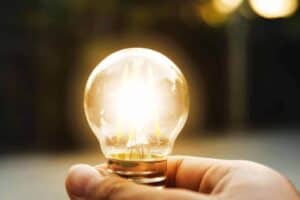Load shedding has spawned massive investment in solar and battery systems.

With load shedding back to stage 6, solar power with battery storage systems are again working overtime.
The massive investment in solar and battery systems by the private sector over the last two years has reduced the strain on the national grid, but a new study by the International Institute for Sustainable Development (IISD) says this is uncoordinated and self-funded.
What the country needs are national and municipal grid storage strategies, which will provide a positive signal to the energy storage industry that it can safely develop supply chains, says Richard Halsey, policy advisor at IISD.
ALSO READ: Eskom imposes stage 6 load shedding for entire weekend due to cold weather
Grid storage takes several forms, from batteries to pumped hydro and thermal energy storage.
They take far less time to commission than new power plants and are intended to store energy during low demand times so they can be used in peak times.
Lithium-ion batteries have dropped in price by 80% since 2013 and that’s prompted a worldwide rush into battery storage systems – though SA has been slow to embrace these solutions to its grid problems.
There might be appetite for wind and solar systems, but Eskom’s overworked distribution grid is unable to connect new power supply at anything like the rate required.
Eskom’s energy availability factor is in long-term decline, as shown in the graph below, and energy storage should be a vital component in fixing the country’s electricity crisis, says the IISD.

The 2019 Integrated Resource Plan (IRP) for national electricity infrastructure development includes 2.1GW of energy storage by 2030. This storage will be in the form of batteries, with the request for proposals for the first 513MW released in March 2023.
This is well short of where the country needs to be to meet the IRP targets on energy storage.
Eskom plans to install 600MWh of battery energy storage systems at each of four coal-fired power stations (Hendrina, Komati, Camden, Grootvlei) as they are decommissioned.
Its latest Generation Connection Capacity Assessment 2024 shows that while the Northern Cape is one of the best locations in the country for solar power generation, there’s simply no capacity to connect new supply to the grid in 2024.
This perhaps explains why just 860MW of solar projects were awarded in Bid Window 6 of the Renewable Energy Independent Power Producer Procurement (Reippp) programme – from an available 4.2GW, of which 1GW was earmarked for solar and the rest to wind.
Benefits
The IISD report identifies seven benefits of energy storage, not least of which is that stored energy reduces the demand for Eskom supply. While solar panels are producing energy during the day, adding batteries allows energy to be drawn down when solar output drops.
Other benefits include the ability to smooth out load shedding, and making better use of existing power plants by allowing them to charge grid storage systems during off-peak hours.
An often-overlooked benefit of energy storage is the ability to optimise the use of Eskom’s over-strained grid, since existing private solar producers are constrained in their ability to connect to the distribution network.
Energy storage systems would make investment in renewables more attractive if this bottleneck was eased.
Balancing supply and demand requires not just producing enough electricity, but moving to where it is needed.
Eskom’s distribution network limits what can be supplied at any particular time. Deploying energy storage at strategic locations to meet peak demand would alleviate this problem and defer the need for grid expansion.
Hydro power
SA currently has four pumped hydro stations, three of them with a combined storage capability of nearly 60 000MWh, and the fourth (Steenbras) belonging to the City of Cape Town, with a capacity of 1 700MWh.
There are also long-delayed plans for the 21 000MWh Tubatse pumped hydro scheme in Mpumalanga, with smaller facilities in Lesotho and the Western Cape.
“A core feature of energy storage is that it decouples generation and supply times,” says the IISD study, entitled Watts in Store.
“In a power system with no energy storage, there must be sufficient generation capacity to meet demand in real time. With energy storage, some of the energy generated can be supplied later, and this time-delay mechanism allows for a wide range of benefits.”
This article originally appeared on Moneyweb and was republished with permission.
Read the original article here.
NOW READ: Electricity minister confident SA will survive winter amid power boost






